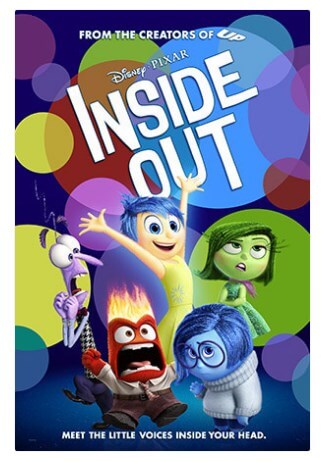In the world of content marketing, we talk a lot about audience engagement. We ask how to best use the latest social media platforms and how to personalize experiences. We try to measure engagement with our content in all sorts of ways, like social shares, e-mail open rates, comments and conversions. It’s easy to get lost in new technologies, trends and metrics that are said to be the next best way to get your target audience to engage with your brand.
If engagement is what you want, the question you need to be asking about all of your content is: Why should my audience care? If you can’t answer that, there’s no social media hack or technology that will help.
If you have bland content, and nobody seems to care about it, you can infuse life into it in a number of ways, including the use of humor and compelling statistics. But one of the best ways to make your content worthy of your potential customers’ time and energy is to use storytelling.
How do you apply storytelling to your content marketing campaigns? Our 8-part series on the fundamentals of storytelling can help guide you. Today’s post is the second in the series, where we cover the number one story element that will get your audience to care about your content: conflict.
Storytelling in Marketing Must Have Conflict – Just Like Your Favorite Movie
Storytelling in marketing is really not so different than storytelling in a novel or a film. All stories must have conflict because:
Conflict raises the emotional stakes. When you give your character something or someone to fight against, you give your reader someone to root for. Conflict draws a reader in and asks them to invest a part of themselves in the story.
Conflict creates tension. Story tension makes the audience want to read on to find out how the story ends. Conflict makes the reader crave a satisfying resolution for the character.
Conflict forces characters to change. When we read stories, there’s an unwritten pact between the author and the reader. The pact says the author will provide a character that grows or changes in some meaningful way so the reader can learn something about themselves in exchange. If the author fails to provide, the reader reserves the right to never read any of the author’s future stories. Conflict is what produces this meaningful change that all audiences desire.
Internal and External Conflict Add Value to Your Content Marketing Campaigns
There are two basic forms of conflict: internal and external. Each brings something different to the table, and the best stories tend to have both.
Internal conflict, which happens when the character struggles with a personal flaw, moral dilemma or emotional issue, can make a character more relatable and likeable and, therefore, worthy of the reader’s attention.
External conflict happens when a character fights against an outside force. The outside force can be another person (character vs. character), an organization or societal norm (character vs. society), an animal or a difficult landscape (character vs. nature) or a threatening technology (character vs. technology). External conflict is typically what drives the narrative of a story.
If you look at any Disney/Pixar animated film, you’ll see master storytelling at work. Their 2015 film Inside Out is a great example of a story with high-stakes conflict that’s both external and internal.

It’s a story about a young girl, Riley, who’s struggling with life changes she has no control over. Her family moves from the Midwest to San Francisco, and her world is turned upside down. Inside Out is internal conflict personified and played out through an external character vs. character conflict. Riley’s emotions can’t agree on how to handle the changes, and their external conflict with each other puts Riley’s core personality – represented by pillar structures in the world of her emotions – in serious danger of total destruction.
Those are some serious stakes! And it’s hard not to care and wonder just how Riley’s emotions will pull together to stop their beloved Riley from becoming someone unrecognizable.
What to Do When Your Content Marketing Campaign is Nothing Like a Movie
It’s tempting to say that storytelling is the same no matter where it's used, and that is fundamentally true. However, there are times when it can seem like a challenge to use storytelling in your content.
If your content is a movie, it’s easy to make it a conflict-driven story. But, what about the daily blog post you have to produce or the white paper?
What’s different about storytelling in a lot of content marketing campaigns is the point-of-view. Content marketing often uses the second-person point-of-view, making the reader the character and their pain points the conflict in the story. Ultimately, the brand needs to be integrated into the story, too.
Here are a few things to remember when tackling seemingly cut-and-dry content, such as blog posts, case studies and ebooks.
- Think about how you can highlight statistics and other data with vignettes about how they apply to the struggles of real people.
- Don’t be afraid to use well-known stories to convey your message (see the Copyblogger example below).
- Remember that when the character is your reader, the conflict should be your reader’s pain points. Is your customer pressed for time? If you’re writing a blog post about products like yours being time savers, you could start with something like, “You sit down and get to work, then suddenly you realize it’s already 4 o’clock and you’ve only achieved half of the things on your to-do list.” Your reader will be plunked down right in the middle of their own personal struggle that they are all too familiar with.
- Case studies are actually excellent candidates for storytelling because their purpose is to convey how your product or service worked for someone else in the real world.
In part 8 of this series, we’ll give you several examples of real-life content marketing materials that creatively incorporate great storytelling, but here is a sneak preview…
Copyblogger – Content Marketing as Seduction blog post by Brian Clark
In a compelling blog post titled, Content Marketing as Seduction, Brian Clark uses the movie Groundhog Day to illustrate how content marketing requires patience and authenticity. If you’ve never seen this classic movie, it’s not a problem because the author uses a recap of the main storyline as his opening hook.

He then uses the movie to help his readers visualize the points he's making: that content marketing takes time, and it has to be grounded in a true understanding of your buyer personas.

Key takeaways: It’s okay to use someone else’s story to drive home your message, and using well-known stories can help your readers quickly and easily understand the point you're trying to make because they already have a built-in mental image of the story.
Writing Content for People
Remember – content is for people – not algorithms. And people love stories.
If you want to motivate your potential customers to continue reading your content, to share it with others and to come back for more, take a good look at whether your content fully utilizes the power of storytelling. If it’s not, give your audience a hero to root for, a struggle they can relate to and a resolution that will inspire them to act.
Are you ready to tell your brand's story? You've got an inspiring background and great products to offer – now all you need is writing talent. If your current staff isn’t trained for content creation, and you’re not sure you want to hire your own in-house content writers for the job, one of our content writing packages might be right for you.
Other posts in this series:
Digital Marketer’s Guide to Unforgettable Content Marketing Campaigns
Use the Right Characters to Jump-Start Your Content Development






